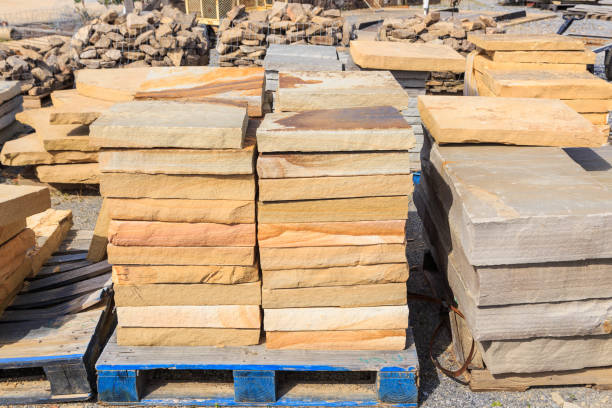Are you curious about the process of exporting cobbles? Look no further! In this comprehensive overview, we'll delve into everything you need to know about getting those beautiful stones from point A to point B. From sourcing the right materials to navigating regulations and customs, we've got you covered. So sit back, relax, and get ready to learn all about the exciting world of cobbles export!
Introduction to
Cobbles Export
Cobbles Export is
the process of exporting cobbles, or small, rounded stones, from one country to
another. Cobbles are typically used for construction purposes, and as such,
their export is regulated by international law.
The first step in Cobbles Manufacturers from India is
to obtain a permit from the country of origin. This permit must be obtained
before any exports can take place. Once the permit has been obtained, the next
step is to find a buyer for the cobbles.
Once a buyer has been found, the next step is to negotiate a
price for the cobbles. The price will vary depending on the type of cobble
being exported, as well as the quantity. After a price has been agreed upon, a
contract must be signed between the buyer and seller.
Once the contract has been signed, the next step is to
arrange for transportation of the cobbles. This can be done through a number of
methods, such as shipping them by sea or airfreight. Once the cobbles have
arrived at their destination, they must then be cleared by customs.
After customs clearance, the last step is to deliver the
cobbles to the buyer. This can be done through a number of methods as well,
such as hand delivery or using a courier service.
What is the Cobbles
Export Process?
The Cobbles Exporter from India process
is a multi-step process that begins with the selection of cobbles from a quarry
site. Once the cobbles have been selected, they are transported to a processing
facility where they are cleaned and sorted. After the cobbles have been
processed, they are shipped to the customer's desired location.
Benefits of Exporting
Cobbles
There are many benefits to exporting cobbles, including:
Cobbles can be used in a variety of construction projects,
from large-scale infrastructure projects to small home improvement projects.
Cobbles are a durable and long-lasting building material,
which means they will continue to look good and provide structural support for
years to come.
Cobbles are low maintenance and easy to care for, requiring
only occasional cleaning with soap and water.
Cobbles are environmentally friendly, as they are made from
natural materials and can be recycled or reused at the end of their lifespan.
Whether you are a builder or homeowner, if you are looking
for a high-quality, low-maintenance building material, exporting cobbles is a
great option.
Challenges of
Exporting Cobbles
Exporting Indian Cobbles Supplier can
be a challenge. There are many factors to consider when exporting, such as:
The type of cobbles you want to export
The country you're exporting to
The import/export regulations of the country you're
exporting to
The cost of shipping
The availability of transport
Legal Requirements
for Exporting Cobbles
Before you can begin exporting cobbles, there are a few
legal requirements you need to take care of. First, you need to obtain a
license from the Department of Natural Resources. This license will allow you
to collect and export a certain amount of cobbles per year. Next, you need to
get a permit from the US Fish and Wildlife Service if you plan on exporting any
endangered or threatened species of cobbles. You will need to fill out a
declaration form for each shipment of cobbles that you send out of the country.
This form will include information on the type and quantity of cobbles being
shipped, as well as the destination country.
Tips for Successful
Export of Cobbles
1. Do your research: When exporting Indian Cobbles Exporters, it is
important to do your research and understand the process. This will help you
avoid any potential problems and make the process go smoothly.
2. Work with a reputable company: There are many companies
that claim to be experts in exporting cobbles, but not all of them are created
equal. Make sure to work with a reputable company that has experience with this
process.
3. Follow the regulations: There are various regulations
that must be followed when exporting cobbles. Be sure to familiarize yourself
with these before starting the process.
4. Keep track of your shipment: Once your shipment of
cobbles leaves the country, it is important to keep track of it. This way, you
can ensure that it arrives at its destination safely and on time.
Conclusion
